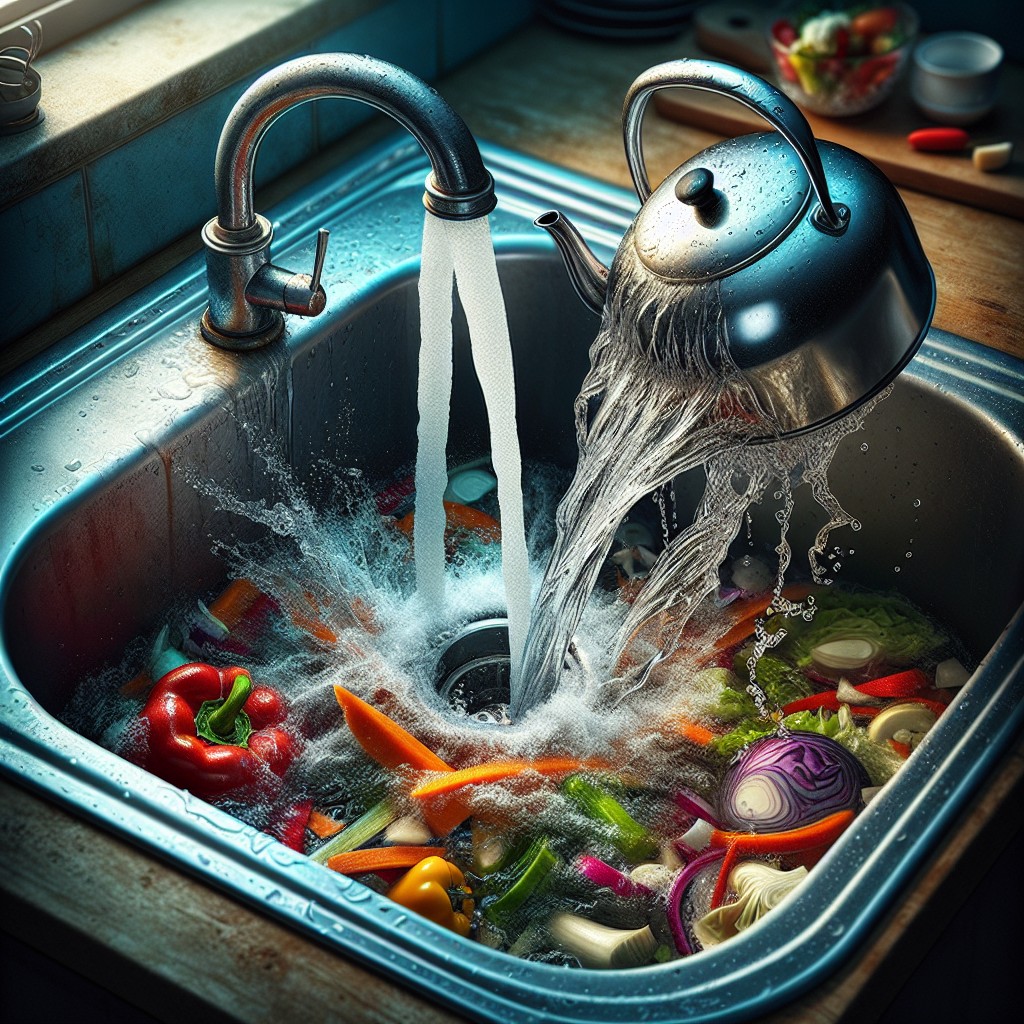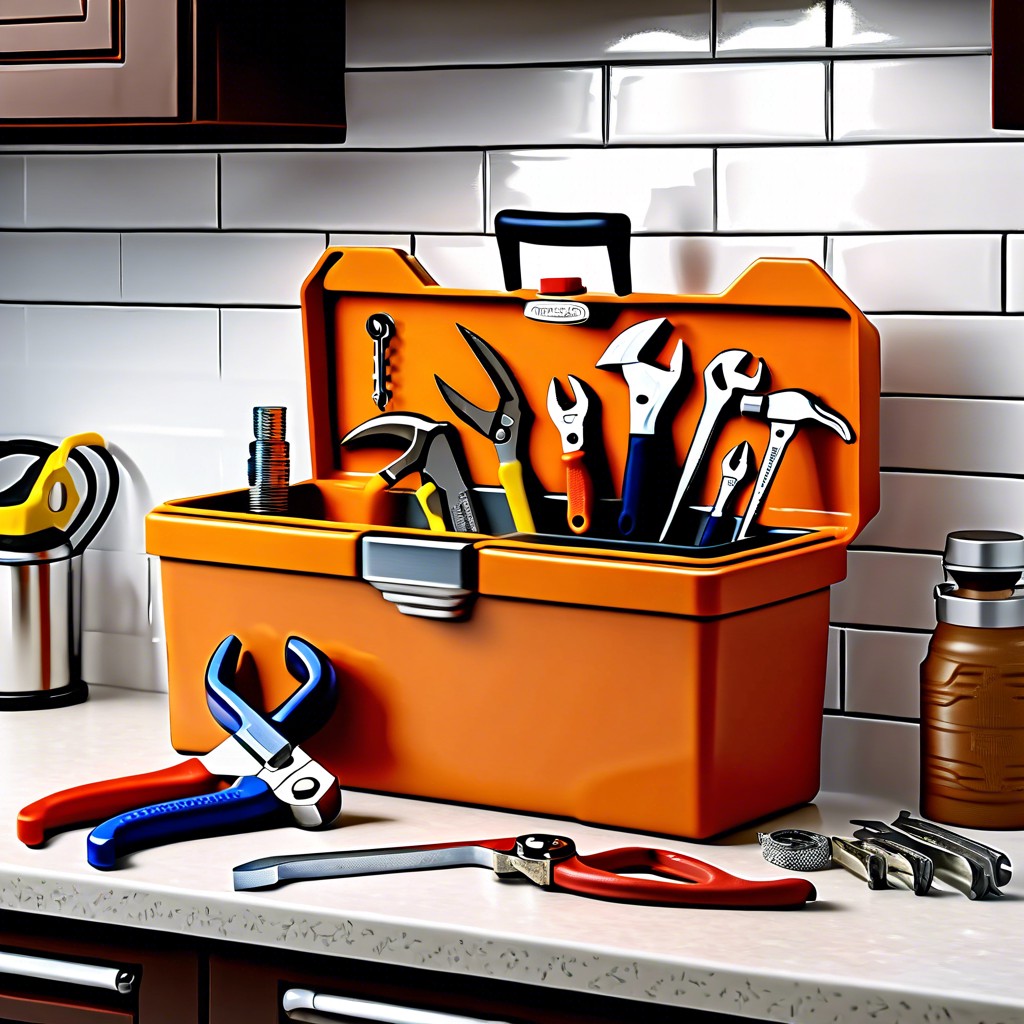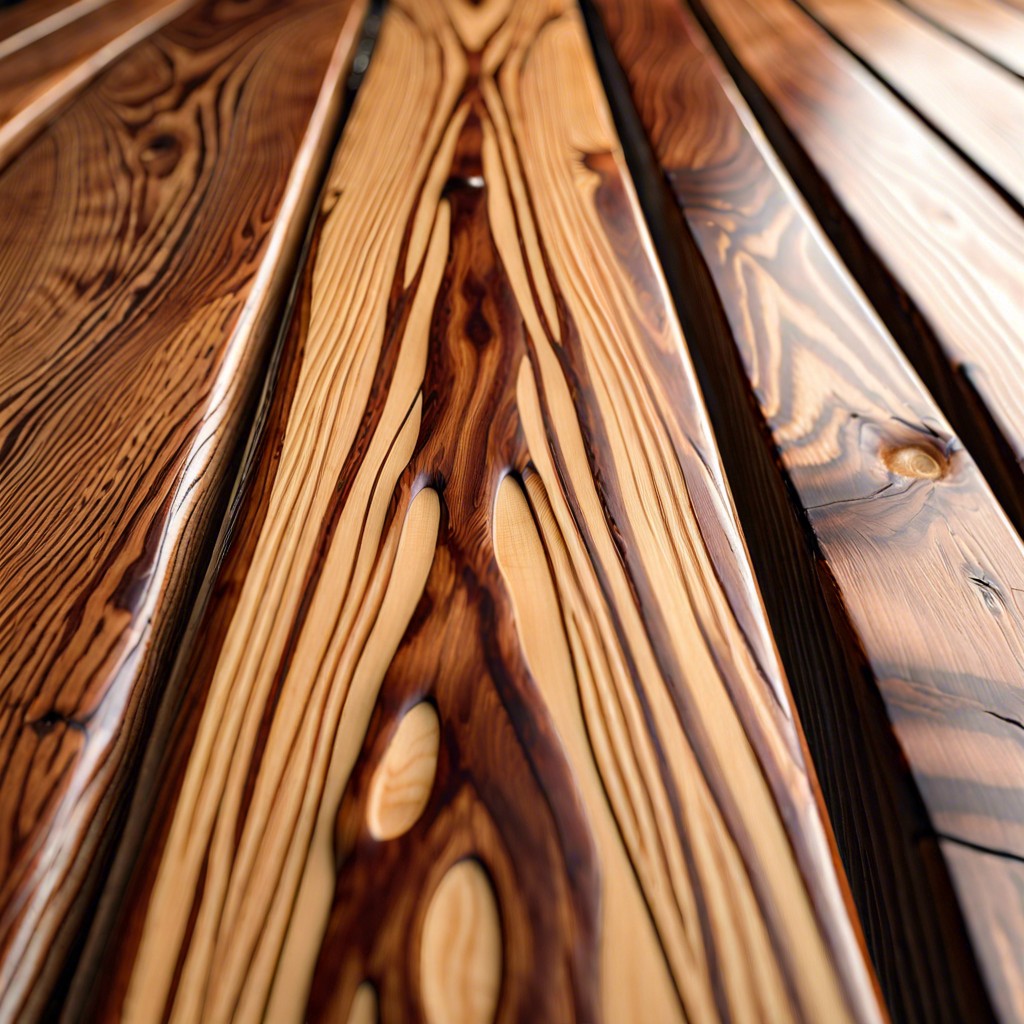Last updated on
Fix your clogged kitchen sink with these practical and simple steps for quick and effective unclogging solutions.
Key takeaways:
- Attack clogs with boiling water, but be careful with PVC pipes.
- Check the garbage disposal for blockages before using chemicals.
- Plunge using a flange plunger to create suction and dislodge clogs.
- Use a plumber’s snake for deep blockages beyond the sink.
- Prevent future clogs with good habits and regular maintenance.
What's Inside
Attack With Boiling Water

When faced with a sluggish drain, boiling water can be your first line of defense. The intense heat helps dissolve grease and soap buildup, which are common culprits. Before you pour, remove any standing water with a cup or bowl. This allows the boiling water to act directly on the clog.
Pour slowly, in stages, giving the hot water time to work its way through the gunk. Boiling water is especially effective on organic materials and can often clear mild blockages without the need for harsh chemicals.
Bear in mind, this method is suited for metal pipes. If you have PVC pipes, the boiling water could damage the joints. In this case, use hot, but not boiling, water to avoid any potential issues.
This simple and eco-friendly solution can save you the headache of more complex procedures. However, if the clog persists, it’s time to consider other tactics, such as the garbage disposal check.
Check the Garbage Disposal
Before reaching for harsh chemicals or calling a plumber, consider that a common culprit for sink blockages is the garbage disposal unit. Often, it’s simply jammed or overloaded. Here’s a quick rundown on how to check it:
1. Safety first – Ensure the disposal is off and cannot be accidentally turned on while working.
2. Listen for the hum – Turn it on to hear if there’s a low humming sound, which indicates a jam.
3. Manual rotation – If it’s not humming, press the reset button. If it hums, use an Allen wrench to manually turn the disposal blades. This can often dislodge whatever is stuck.
4. Break up visible blockages – If you spot an obstruction and can safely reach it, use pliers to remove the item causing the issue.
5. Flush it out – Run water and turn on the disposal to ensure it’s clear and operable.
Remember, a well-maintained disposal is less likely to cause backups, so routinely flush it with cold water while grinding up ice to keep it sharp and clean.
Plunge Away the Blockage
Effective plunging starts with the right tool: a flange plunger, which has an extended rubber flap below the dome-shaped rubber cup, is specifically designed for toilets, but it can also create the necessary seal on a kitchen sink. Seal the plunger over the drain opening and ensure water covers the rubber cup for proper suction.
Begin with gentle plunges to remove any air and establish a vacuum. Gradually increase the intensity of the plunges. The push-and-pull action helps loosen the clog. If the sink has a double basin, you’ll need to seal off the second drain with a wet cloth or a stopper to focus the pressure on the clogged area.
After several vigorous plunges, swiftly pull the plunger off the drain to create additional vacuum. This sudden force can dislodge blockages. Repeat the process several times. If water starts to drain, you’ve likely cleared the path. Run hot water afterwards to flush away any remaining debris.
Remember, patience is key. Plunging might not seem to work initially, but persistence often pays off unless the clog is too tenacious for manual removal.
Try the Plumber’s Snake
Diving into deeper blockages requires a tool with reach and flexibility. A plumber’s snake, or drain auger, bends comfortably through tight curves in your pipes, allowing you to dislodge obstacles lurking beyond the sink.
Insert the coiled end into your drain, turning the handle with consistent pressure as it snakes down. When you feel resistance, you’ve likely hit the clog. Wiggle and rotate the snake, breaking up the stubborn blockage, then slowly pull it out, bringing debris with it.
Repeat if necessary, and run water to clear any remaining obstruction. The beauty of this tool lies in its simplicity and effectiveness, often resolving issues that boiling water and plunging can’t touch.
How to Prevent Future Clogs
Maintaining a clear sink requires a mix of good habits and regular maintenance.
- Mindfulness is key. Be cautious of what goes down the drain. Coffee grounds, grease, and starchy substances can spell disaster for pipes. Instead, dispose of these in a trash can or compost bin.
- Utilize a sink strainer. It catches food particles and other debris, preventing them from accumulating in your plumbing.
- Regularly flush your sink with hot water. Doing this for a minute once a week can help clear away any budding clogs before they worsen.
- Baking soda and vinegar can work wonders. Once a month, pour a half cup of baking soda followed by half a cup of white vinegar down the drain. After 15 minutes, flush with boiling water to keep your sink fresh and free-flowing.
- Enzyme-based cleaners, used occasionally, can break down organic material without damaging pipes, unlike harsh chemical cleaners.
- Don’t overlook the power of professional maintenance. Scheduling an annual inspection with a plumber can nip potential problems in the bud, keeping your kitchen sink in top condition.
Adopting these practices can significantly reduce the likelihood of future clogs, ensuring a smoothly functioning kitchen sink.




